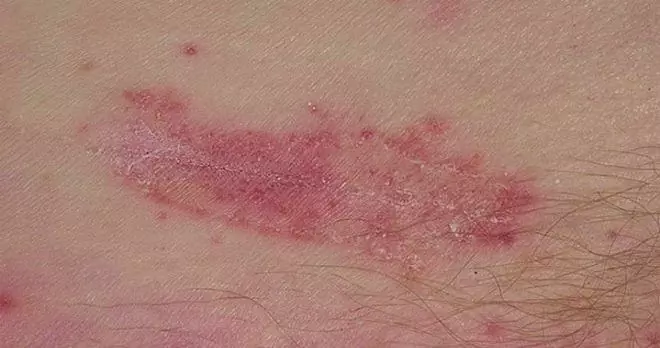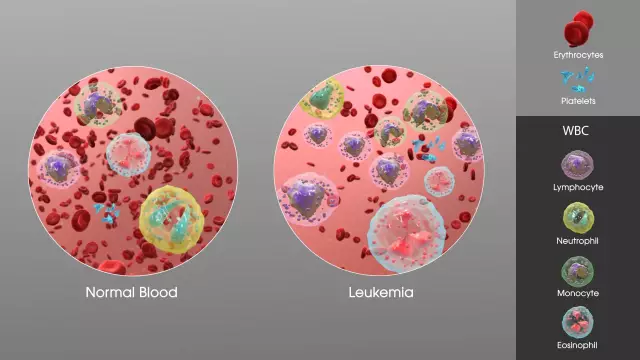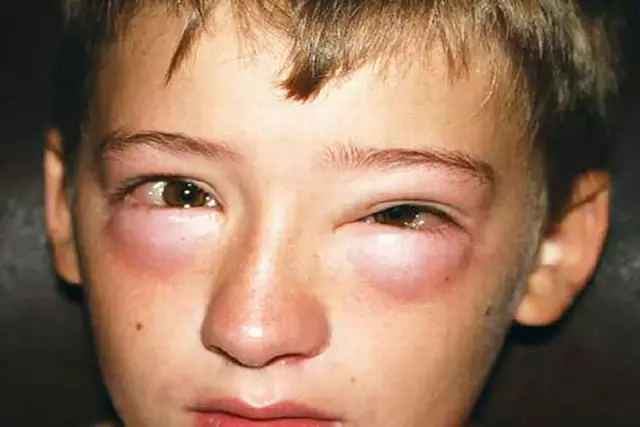- Author Rachel Wainwright [email protected].
- Public 2023-12-15 07:39.
- Last modified 2025-11-02 20:14.
Candidiasis

Candidiasis - is an infectious disease that affects mucous membranes, skin, nails, internal organs of a person. The most common candidiasis or thrush of the oral cavity and genitourinary organs. The causative agent of the disease is a microscopic yeast-like fungus of the genus Candida. Candidiasis in women most often affects the vaginal mucosa. In newborns, the most common fungal infection of the mucous membrane of the cheeks, tongue, throat. In men, candidiasis is much less common and is characterized by a lesion of the penis, itching and redness in the head and foreskin.
The most susceptible to the disease are people with weakened immunity, patients with diabetes mellitus, HIV infection. In 70% of cases, the first symptoms of candidiasis appear as a consequence of antibacterial treatment. Genital candidiasis in women is by no means uncommon during pregnancy or hormone therapy. The route of infection with candidiasis is predominantly autoinfection, i.e. due to the pathological reproduction of their own Candida. There is also the likelihood of symptoms of candidiasis after household or sexual contact with carriers of the infection.
Candidiasis symptoms
Symptoms of candidiasis in women with the genital form of the disease include itching and burning in the genital area, as well as curdled whitish discharge from the vagina. With a complicated form of candidiasis and the spread of the fungus to the excretory system of the body, pain during urination can become a symptom of candidiasis.
In men, urogenital candidiasis is manifested by pain during intercourse and urination, itching, burning of the foreskin and glans penis. Symptoms of candidiasis in men also include redness of the penis and the appearance of foci with a whitish-gray coating on it.
Diagnosis of candidiasis
The fungus, the causative agent of candidiasis, is detected by bacteriological seeding of genital secretions. In the diagnosis of candidiasis, methods of light microscopy, direct immunofluorescence or polymerase chain reaction can also be used. Each of these diagnostic methods has a fairly high information content, however, the most significant role is played not by the detection of the fungus in the genital discharge, but by its quantitative characteristics, by counting the number of growing fungal colonies. In small quantities, the microorganism Candida can be present in the secretions of a completely healthy person without pronounced symptoms of candidiasis.
Treatment of candidiasis

Treatment of candidiasis in men with the urogenital form of the disease is mainly local, using creams, ointments based on Clotrimazole. The drug is applied to the affected area of the genital organ 2 times a day. It is also possible to prescribe a single oral dose of the combined antifungal drug. In the treatment of candidiasis in men, Fluconazole has proven itself in various commercial dosage forms.
Local treatment of candidiasis in women is carried out only with a mild course of the disease. In this case, the patient is prescribed vaginal suppositories or tablets of combined antifungal action based on Clotrimazole, Isoconazole, Miconazole, etc. With more intense symptoms of candidiasis in women, antibiotic therapy is also prescribed. In addition to the main treatment of candidiasis, immunotherapy, physiotherapy and general strengthening drugs are used.
In the treatment of recurrent candidiasis with an exacerbation of the condition up to 4 times a year, it is customary to prescribe a single weekly intake of atimycotics for 3-4 months. Treatment of candidiasis in women during pregnancy is exclusively local, due to the high risk of penetration of the active ingredients of the drug through the placental barrier.
Prevention of candidiasis
You can significantly reduce the likelihood of pathological reproduction of the Candida fungus with the help of careful adherence to personal hygiene measures and regular examinations by a doctor. Measures for the prevention of candidiasis also include prophylactic intake of vitamin-mineral, immunostimulating drugs and antifungal drugs during the course of antibiotic therapy.
YouTube video related to the article:
The information is generalized and provided for informational purposes only. At the first sign of illness, see your doctor. Self-medication is hazardous to health!






